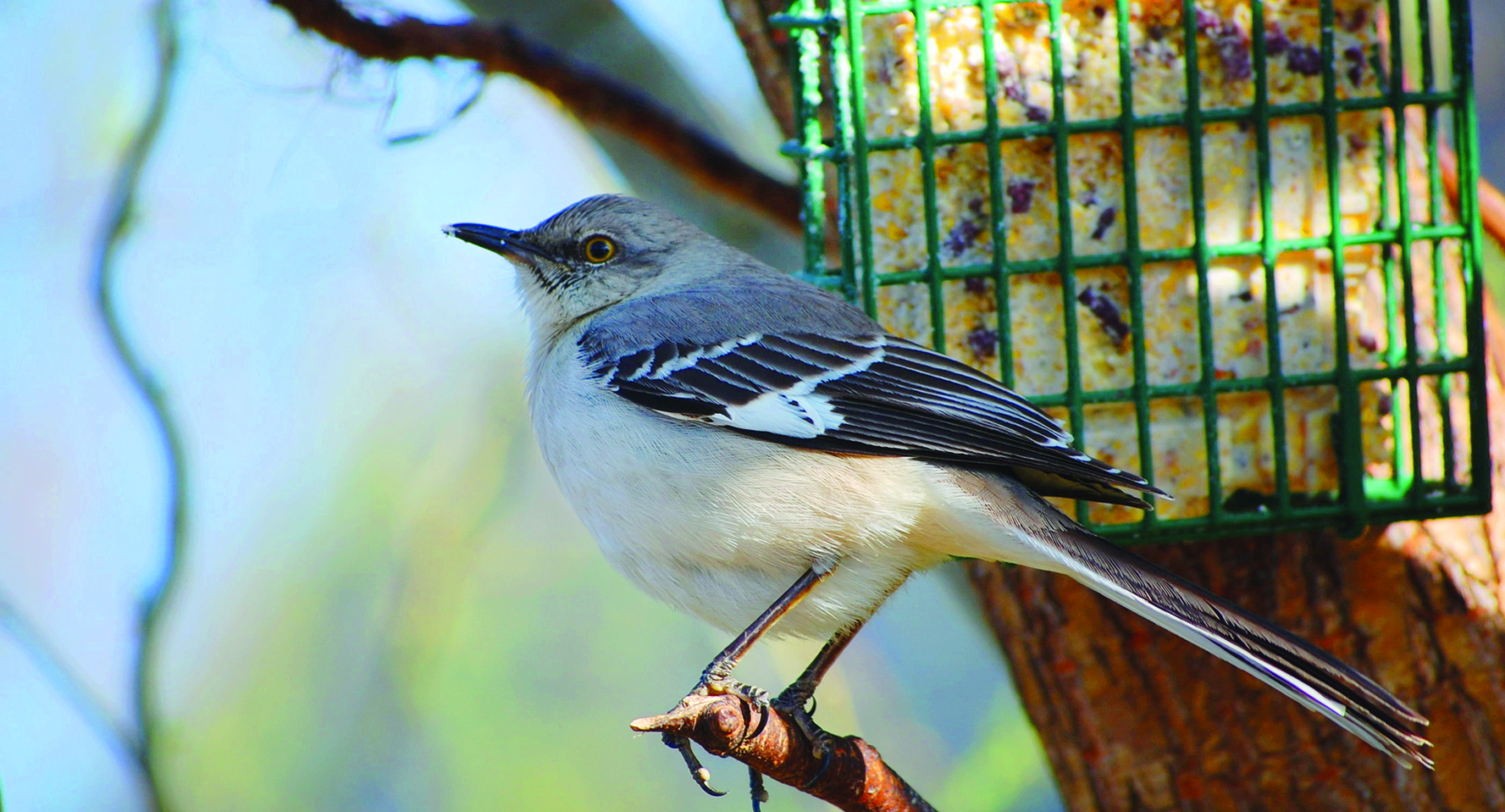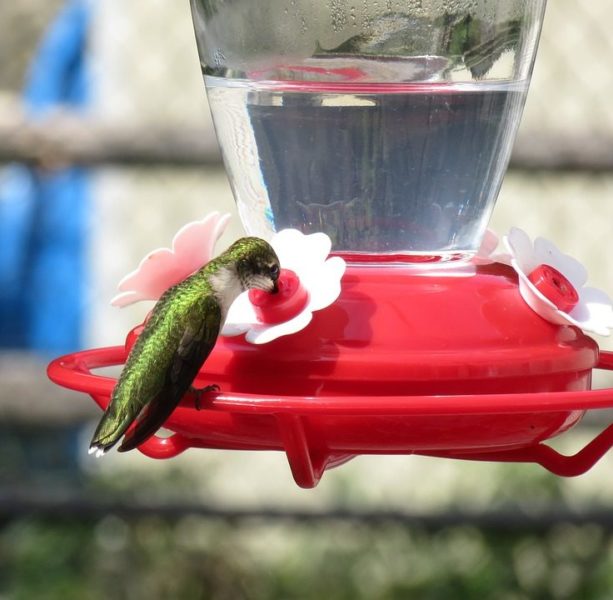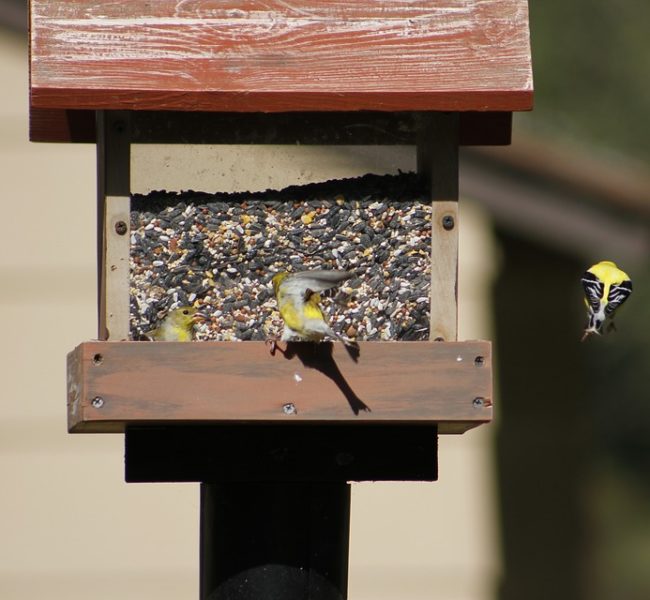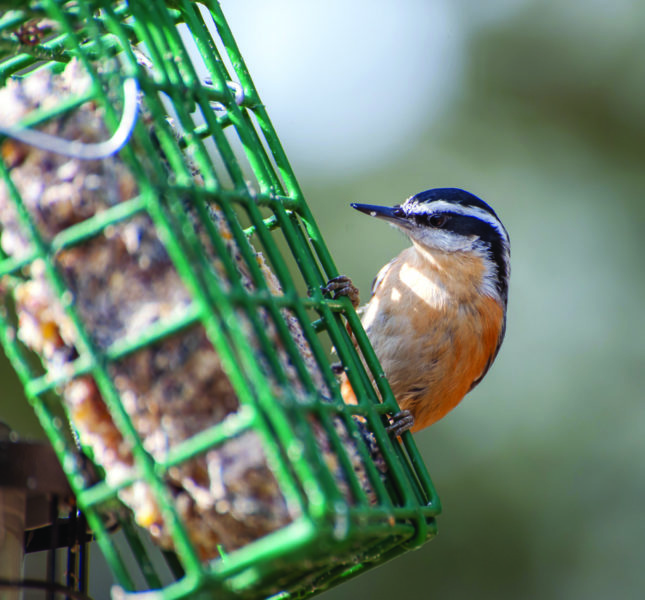National Bird Feeding Month
February is National Bird Feeding Month! Whether you are looking to start or expand your bird sanctuary, you might be wondering what types of feeders will work best. Here are some tips for attracting new feathered visitors to your home.
Nectar Feeders
Nectar Feeders are a common way to attract hummingbirds to your home. Due to their quick metabolisms, hummingbirds often find themselves searching for a reliable food source. If you choose to host a nectar feeder, keeping it filled is essential for your feathered friends. Luckily, a faux nectar recipe is quite simple, just mix 1 part white granulated sugar with 4 parts water. Remember to replace the water mixture every 3-5 days to make sure that it stays fresh and to reduce the possibility of mold or fermented liquid.
While hummingbirds will be regular visitors at your nectar feeders, you may also witness a few orioles, finches, warblers, and perhaps even woodpeckers sneaking the occasional treat. *
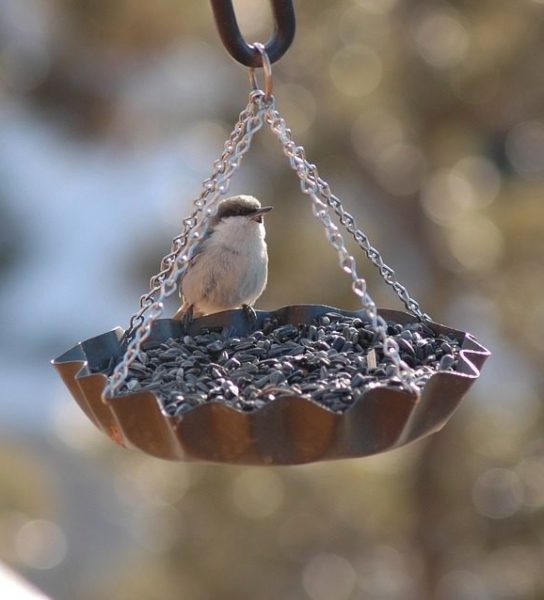
If you are looking for a feeder that will attract the largest array of birds, choosing a platform feeder is the way to go. With the seed easily accessible for all varieties, your only limitations are the food and location that you choose. When selecting or even building a platform feeder, there are a few design choices you may want to consider such a cover or drainage option. With the food out in the open, you run the risk of rain entering the tray and causing bacterial or fungal growth.
After you place your platform feeder, remember to clean it regularly and refill it daily. With frequent visitation and a lack of standing space, your feeder will often fall victim to frequent emptying and bird droppings. Keeping your feeder clean and full is the best way to ensure healthy visitors.
If you hang your feeder high, you may attract a variety of cardinals, chickadees, finches, jays, pigeons, sparrows, starlings, and more. *
If you opt to have a ground feeder instead, you might instead see a variety of doves, goldfinches, jays, sparrows, towhees, and more. * If you do choose to have a ground feeder, make sure to take extra precautionary measures against squirrels.
Hopper Feeders
Searching for an aesthetically pleasing feeder with little need for regular maintenance? Hopper Feeders have become more and more popularized due to the simplicity of use and design. With clear walls, checking the seed supply can be as easy as looking out your window. These feeders also feature roofs to cover the seed and feeding areas to decrease water entry. This means that you don’t need to replace the seeds after rainfall. Despite this, you should still clean and refill your feeder every 1-2 weeks to maintain a safe eating environment.
Use a small hopper feeder when you want to attract smaller bird species only such as chickadees, finches, sparrows, titmice, warblers, and wrens. * The low roof will disallow larger species from eating.
Use a large hopper feeder when you want larger species such as blue jays, grackles, grosbeaks, pigeons, and woodpeckers. *
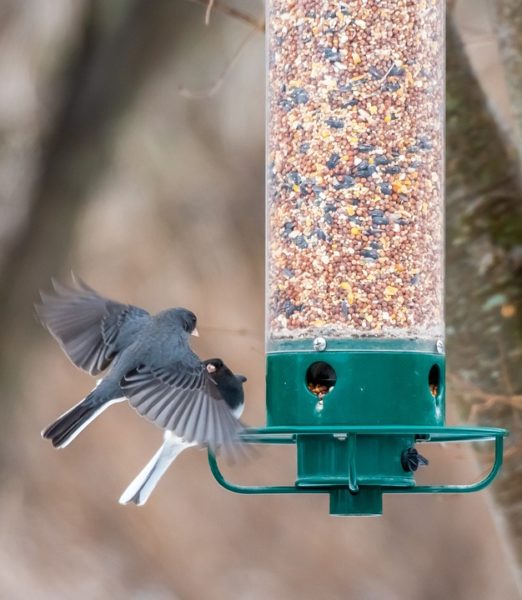
Tube Feeders work best when attracting smaller species due to their small perches and feeding slots. The tubular design benefits both you and your feathered friends. The specially placed perches dissuade competition and the easily broken-down design makes cleaning and refilling a simple task. When adding food, make sure to dump out any remaining seed first. The inch or so at the bottom of the feeder will often have food that is unobtainable to the birds. Leaving this seed in for too long may allow bacterial growth. Get in the habit of emptying your feeder any time you plan to refill just to be safe.
Use a tube feeder when you want to attract cardinals, chickadees, finches, grosbeaks, nuthatches, redpolls, titmice, and more. *
Suet Cage
Made from a mixture of fats, bird suet is beneficial, especially in the winter, to birds searching for high-energy food. When choosing to hang suet year-round, make sure that you choose specific blends that are formulated to last in all seasons. Improperly made or stored suet can melt or become rancid easily in hotter months. Suet is a great option for winter. The fat content helps to keep birds warm and energized and is an easy option in the colder months. Just remember to use caution in other seasons and buy only from reputable dealers such as Rocky’s.
Suet is a great way to attract chickadees, jays, nuthatches, and woodpeckers. * They also attract starlings but a special Suet Cage that requires the birds to eat upside down can keep them away.
*Bird species vary upon regional location.
Other Bird Feeding Tips:
- Black Oil Sunflower Seed is one of the best feeds that you can choose. It attracts the largest variety of birds and provides them with a nutritious meal that will keep them coming back.
- If squirrels are one of your main concerns, choose bird feeders with metal which will prevent them from damaging your feeders. Selecting Safflower or Nyjer seeds, which have a bitter taste, will also discourage squirrels from indulging in the food itself.
- Keep your feeders stocked. Birds will continue to return if they know they have a reliable food source.
- Keep up with regular cleaning. This will prevent not only mold and bacteria, but unwanted rodents or other visitors attracted to fallen or leftover seed.

